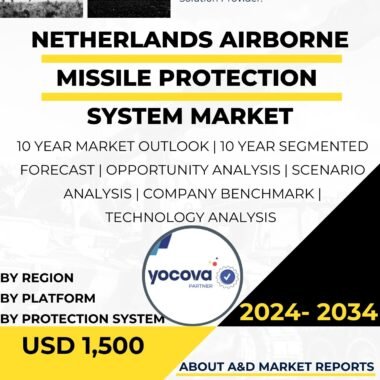Description
Malaysia Airborne Countermeasure Market
The Malaysia Airborne Countermeasure market has become increasingly important as the nation seeks to enhance its defense capabilities against aerial threats. As the geopolitical landscape evolves and adversaries acquire more sophisticated and diverse weapon systems, the need for advanced airborne countermeasures has become paramount to protect Malaysia’s airspace, military assets, and civilian population.
The primary driver behind the growth of the Airborne Countermeasure market in Malaysia is the increasing proliferation of aerial threats, including surface-to-air missiles (SAMs), air-to-air missiles, and anti-aircraft artillery. As potential adversaries strengthen their air defense capabilities, Malaysia must adopt advanced countermeasure technologies to neutralize and deter these threats effectively.
Airborne Countermeasures play a crucial role in safeguarding both military and civilian aircraft. These systems protect against incoming missiles and other threats by confusing or misleading the attackers’ targeting systems, effectively disrupting their ability to accurately engage the aircraft.
One of the key components of Airborne Countermeasures is the use of flares and chaff. Flares are pyrotechnic devices that produce bright and hot infrared signatures, diverting heat-seeking missiles away from the targeted aircraft. Chaff, on the other hand, consists of small metallic or plastic strips that create a radar reflection, confusing enemy radar-guided missiles.
The deployment of Airborne Countermeasure systems is particularly crucial for military aircraft engaged in combat missions and high-risk operations. By enhancing aircraft survivability, these systems ensure the safety of pilots and the continuity of missions, enabling the Malaysian Air Force to maintain control of the airspace and respond effectively to threats.
Moreover, the Airborne Countermeasure market extends beyond military applications, as commercial aircraft also require protection against potential aerial threats. In an era of increased civil aviation security concerns, Airborne Countermeasures can mitigate the risk of attacks on civilian aircraft and enhance passenger safety.
In addition to traditional threats, the rise of unmanned aerial vehicles (UAVs) or drones has added a new dimension to the Airborne Countermeasure market in Malaysia. As drone technology becomes more accessible, the risk of hostile or unauthorized UAVs is on the rise, making it imperative to deploy countermeasure systems to protect critical infrastructure and sensitive areas from potential attacks.
Malaysia’s commitment to developing indigenous defense capabilities has driven investments in research and development within the Airborne Countermeasure sector. Collaborations between the government and local defense companies, as well as partnerships with international defense manufacturers, can facilitate technology transfer and expertise development, fostering the growth of Malaysia’s defense industry.
Furthermore, the Airborne Countermeasure market offers economic benefits by creating job opportunities and attracting foreign direct investment. As the demand for these systems increases, local manufacturing and maintenance facilities can be established, generating employment and enhancing Malaysia’s defense industrial base.
However, several challenges must be addressed to fully realize the potential of the Airborne Countermeasure market in Malaysia. One significant obstacle is the rapid advancement of aerial threat technologies, which requires constant upgrades and improvements to countermeasure systems. Keeping pace with evolving threats and maintaining the systems’ effectiveness over time necessitate continuous modernization efforts.
Moreover, ensuring the integration and interoperability of Airborne Countermeasure systems with other defense assets, such as radars, sensors, and command and control centers, is essential for comprehensive and coordinated defense operations.
Additionally, the reliability and effectiveness of Airborne Countermeasure systems in different operational environments and against various threats must be rigorously tested and validated to ensure their performance in real-world scenarios.
Furthermore, the cost of acquiring and maintaining advanced Airborne Countermeasure systems can be substantial, particularly for smaller defense budgets. Ensuring cost-effectiveness and efficient resource allocation will be essential to sustain the development and deployment of these systems.
In conclusion, the Airborne Countermeasure market in Malaysia is witnessing significant growth as the nation recognizes the importance of countering aerial threats to protect its airspace, military assets, and civilian population. The adoption of advanced countermeasure technologies, such as flares and chaff, plays a crucial role in disrupting enemy targeting systems and enhancing aircraft survivability. The market’s expansion extends beyond military applications to include civilian aircraft protection. Efforts to develop indigenous defense capabilities through research and development initiatives and partnerships with international defense companies are vital for sustainable growth in the market. Addressing challenges related to technology advancement, interoperability, reliability, and cost will be essential to ensure the successful deployment and operation of Airborne Countermeasure systems in Malaysia’s defense sector. By investing in advanced Airborne Countermeasure capabilities, Malaysia can enhance its deterrence posture, safeguard its airspace, and protect its national interests, contributing to regional security and stability.




